-
SUPPLEMENTS MARKET, BY TYPE 20
-
\r\n1.2 GLOBAL
-
VITAMIN & MINERAL SUPPLEMENTS MARKET, BY FORM 21
-
\r\n1.3
-
GLOBAL VITAMIN & MINERAL SUPPLEMENTS MARKET, BY END-USER 22
-
\r\n1.4 GLOBAL VITAMIN & MINERAL SUPPLEMENTS MARKET, BY APPLICATION
-
23
-
\r\n1.5 GLOBAL VITAMIN & MINERAL SUPPLEMENTS
-
MARKET, BY DISTRIBUTION CHANNEL 24
-
\r\n1.6 GLOBAL
-
VITAMIN & MINERAL SUPPLEMENTS MARKET, BY REGION 25
-
\r\n2
-
MARKET INTRODUCTION 26
-
\r\n2.1 DEFINITION 26
-
\r\n2.2 SCOPE OF THE STUDY 26
-
\r\n2.3
-
RESEARCH OBJECTIVE 26
-
\r\n2.4 MARKET STRUCTURE 27
-
\r\n3 RESEARCH METHODOLOGY 28
-
\r\n3.1
-
RESEARCH PROCESS 28
-
\r\n3.2 PRIMARY RESEARCH 29
-
\r\n3.3 SECONDARY RESEARCH 30
-
\r\n3.4
-
MARKET SIZE ESTIMATION 31
-
\r\n3.5 FORECAST
-
MODEL 32
-
\r\n3.6 LIST OF ASSUMPTIONS &
-
LIMITATIONS 33
-
\r\n4 MARKET DYNAMICS 34
-
\r\n4.1 INTRODUCTION 34
-
\r\n4.2 DRIVERS
-
35
-
\r\n4.2.1 GROWING DEMAND FOR IMMUNITY-BOOSTING
-
PRODUCTS 35
-
\r\n4.2.2 US GYM MEMBERSHIP BY GENERATION,
-
\r\n4.2.3 INCREASING HEALTHCARE COSTS
-
36
-
\r\n4.2.4 DRIVERS IMPACT ANALYSIS 37
-
\r\n4.3 RESTRAINT 37
-
\r\n4.3.1 RISE
-
OF COUNTERFEIT AND FAKE PRODUCTS SUPPLY 37
-
\r\n4.3.2
-
RESTRAINT IMPACT ANALYSIS 38
-
\r\n4.4 OPPORTUNITIES
-
38
-
\r\n4.4.1 STRONG GROWTH OF THE GERIATRIC
-
POPULATION 38
-
\r\n4.4.2 GROWTH OF E-COMMERCE SALES
-
IN THE DIETARY SUPPLEMENTS INDUSTRY 39
-
\r\n4.5 CHALLENGES
-
40
-
\r\n4.5.1 VARYING GOVERNMENT REGULATIONS
-
RELATED TO LABELING AND CLAIMS 40
-
\r\n5 MARKET
-
FACTOR ANALYSIS 41
-
\r\n5.1 VALUE CHAIN ANALYSIS 41
-
\r\n5.1.1 RAW MATERIAL PROCUREMENT 42
-
\r\n5.1.2
-
PROCESSING 42
-
\r\n5.1.3 PACKING 42
-
\r\n5.2 SUPPLY CHAIN ANALYSIS 43
-
\r\n5.2.1
-
RAW MATERIAL SOURCING 44
-
\r\n5.2.2 MANUFACTURING 44
-
\r\n5.2.3 DISTRIBUTION 44
-
\r\n5.2.4
-
END-USER 44
-
\r\n5.3 PORTER'S FIVE FORCES MODEL
-
45
-
\r\n5.3.1 THREAT OF NEW ENTRANTS 45
-
\r\n5.3.2 BARGAINING POWER OF SUPPLIERS 46
-
\r\n5.3.3
-
THREAT OF SUBSTITUTES 46
-
\r\n5.3.4 BARGAINING POWER OF BUYERS
-
46
-
\r\n5.3.5 INTENSITY OF RIVALRY 46
-
\r\n5.4 IMPACT OF COVID-19 ON THE GLOBAL VITAMIN AND MINERAL SUPPLEMENTS
-
MARKET 47
-
\r\n5.4.1 IMPACT ON RAW MATERIAL
-
AVAILABILITY & PRODUCTION 47
-
\r\n5.4.2 IMPACT
-
ON CONSUMER BUYING BEHAVIOUR 48
-
\r\n5.4.3 IMPACT
-
ON ONLINE VS STORE-BASED SALES 48
-
\r\n5.4.4 IMPACT
-
ON PRICING 48
-
\r\n6 GLOBAL VITAMIN & MINERAL
-
SUPPLEMENTS MARKET, BY TYPE 49
-
\r\n6.1 OVERVIEW
-
49
-
\r\n6.1.1 GLOBAL VITAMIN & MINERAL SUPPLEMENTS
-
MARKET ESTIMATES & FORECAST, BY TYPE, 2024–2032 50
-
\r\n6.2
-
VITAMINS 51
-
\r\n6.2.1 VITAMINS: MARKET ESTIMATES
-
& FORECAST, BY REGION, 2024–2032 52
-
\r\n6.3
-
MINERALS 52
-
\r\n6.3.1 MINERALS: MARKET ESTIMATES
-
& FORECAST, BY REGION, 2024–2032 53
-
\r\n7
-
GLOBAL VITAMIN & MINERAL SUPPLEMENTS MARKET, BY FORM 54
-
\r\n7.1
-
OVERVIEW 54
-
\r\n7.1.1 GLOBAL VITAMIN & MINERAL
-
SUPPLEMENTS MARKET ESTIMATES & FORECAST, BY FORM, 2024–2032 55
-
\r\n7.2 POWDER 55
-
\r\n7.2.1 POWDER:
-
MARKET ESTIMATES & FORECAST, BY REGION, 2024–2032 55
-
\r\n7.3 CAPSULE & TABLETS 56
-
\r\n7.3.1
-
CAPSULE & TABLETS: MARKET ESTIMATES & FORECAST, BY REGION, 2024–2032
-
56
-
\r\n7.4 LIQUID 57
-
\r\n7.4.1
-
LIQUID: MARKET ESTIMATES & FORECAST, BY REGION, 2024–2032 57
-
\r\n7.5 OTHERS 58
-
\r\n7.5.1 OTHERS:
-
MARKET ESTIMATES & FORECAST, BY REGION, 2024–2032 58
-
\r\n8 GLOBAL VITAMIN & MINERAL SUPPLEMENTS MARKET, BY END USER
-
59
-
\r\n8.1 OVERVIEW 59
-
\r\n8.1.1
-
GLOBAL VITAMIN & MINERAL SUPPLEMENTS MARKET ESTIMATES & FORECAST, BY END
-
USER, 2024–2032 60
-
\r\n8.2 MEN 60
-
\r\n8.2.1
-
MEN: MARKET ESTIMATES & FORECAST, BY REGION, 2024–2032 60
-
\r\n8.3 WOMEN 61
-
\r\n8.3.1 WOMEN:
-
MARKET ESTIMATES & FORECAST, BY REGION, 2024–2032 61
-
\r\n8.4 UNISEX 62
-
\r\n8.4.1 UNISEX:
-
MARKET ESTIMATES & FORECAST, BY REGION, 2024–2032 62
-
\r\n9 GLOBAL VITAMIN & MINERAL SUPPLEMENTS MARKET, BY APPLICATION
-
63
-
\r\n9.1 OVERVIEW 63
-
\r\n9.1.1
-
GLOBAL VITAMIN & MINERAL SUPPLEMENTS MARKET ESTIMATES & FORECAST, BY APPLICATION,
-
\r\n9.2 ENERGY/SPORTS NUTRITION 65
-
\r\n9.2.1 ENERGY/ SPORTS NUTRITION: MARKET ESTIMATES & FORECAST,
-
BY REGION, 2024–2032 65
-
\r\n9.3 WEIGHT
-
MANAGEMENT 66
-
\r\n9.3.1 WEIGHT MANAGEMENT: MARKET
-
ESTIMATES & FORECAST, BY REGION, 2024–2032 66
-
\r\n9.4
-
IMMUNITY AND DIGESTIVE HEALTH 67
-
\r\n9.4.1 IMMUNITY
-
AND DIGESTIVE HEALTH: MARKET ESTIMATES & FORECAST, BY REGION, 2024–2032
-
67
-
\r\n9.5 ANTI-CANCER 68
-
\r\n9.5.1 ANTI-CANCER: MARKET ESTIMATES & FORECAST, BY REGION,
-
\r\n9.6 SKIN CARE 69
-
\r\n9.6.1 SKIN CARE: MARKET ESTIMATES & FORECAST, BY REGION,
-
\r\n9.7 GLYCEMIC & DIABETES MANAGEMENT
-
70
-
\r\n9.7.1 GLYCEMIC & DIABETES MANAGEMENT:
-
MARKET ESTIMATES & FORECAST, BY REGION, 2024–2032 70
-
\r\n9.8 OTHER 71
-
\r\n9.8.1 OTHER:
-
MARKET ESTIMATES & FORECAST, BY REGION, 2024–2032 71
-
\r\n10 GLOBAL VITAMIN & MINERAL SUPPLEMENTS MARKET, BY DISTRIBUTION
-
CHANNEL 72
-
\r\n10.1 OVERVIEW 72
-
\r\n10.1.1 GLOBAL VITAMIN & MINERAL SUPPLEMENTS MARKET ESTIMATES
-
& FORECAST, BY DISTRIBUTION CHANNEL, 2024–2032 73
-
\r\n10.2
-
SUPERMARKET & HYPERMARKET 74
-
\r\n10.2.1 SUPERMARKET
-
& HYPERMARKET: MARKET ESTIMATES & FORECAST, BY REGION, 2024–2032 74
-
\r\n10.3 CHEMIST/PHARMACIES 75
-
\r\n10.3.1
-
CHEMIST/PHARMACIES: MARKET ESTIMATES & FORECAST, BY REGION, 2024–2032
-
75
-
\r\n10.4 DRUGSTORES/PARAPHARAMCIES 76
-
\r\n10.4.1 DRUGSTORES/PARAPHARAMCIES: MARKET ESTIMATES & FORECAST,
-
BY REGION, 2024–2032 76
-
\r\n10.5 ONLINE
-
77
-
\r\n10.5.1 ONLINE: MARKET ESTIMATES &
-
FORECAST, BY REGION, 2024–2032 77
-
\r\n10.6 OTHERS
-
78
-
\r\n10.6.1 OTHERS: MARKET ESTIMATES &
-
FORECAST, BY REGION, 2024–2032 78
-
\r\n11 GLOBAL
-
VITAMIN & MINERAL SUPPLEMENT MARKET, BY REGION 79
-
\r\n11.1
-
OVERVIEW 79
-
\r\n11.2 NORTH AMERICA 81
-
\r\n11.2.1 US 84
-
\r\n11.2.2 CANADA
-
86
-
\r\n11.2.3 MEXICO 88
-
\r\n11.3
-
EUROPE 90
-
\r\n11.3.1 GERMANY 93
-
\r\n11.3.2 UK 95
-
\r\n11.3.3 FRANCE
-
97
-
\r\n11.3.4 SPAIN 99
-
\r\n11.3.5
-
ITALY 101
-
\r\n11.3.6 REST OF EUROPE 103
-
\r\n11.4 ASIA-PACIFIC 106
-
\r\n11.4.1
-
CHINA 109
-
\r\n11.4.2 JAPAN 111
-
\r\n11.4.3 INDIA 113
-
\r\n11.4.4 AUSTRALIA
-
& NEW ZEALAND 115
-
\r\n11.4.5 REST OF ASIA-PACIFIC 117
-
\r\n11.5 REST OF THE WORLD 119
-
\r\n11.5.1
-
SOUTH AMERICA 122
-
\r\n11.5.2 MIDDLE EAST 124
-
\r\n11.5.3 AFRICA 126
-
\r\n12 COMPETITIVE
-
LANDSCAPE 128
-
\r\n12.1 INTRODUCTION 128
-
\r\n12.2 MARKET STRATEGY ANALYSIS 128
-
\r\n12.3
-
COMPETITIVE BENCHMARKING 129
-
\r\n12.4 KEY
-
DEVELOPMENTS & GROWTH STRATEGIES 131
-
\r\n12.4.1 PRODUCT
-
LAUNCH 131
-
\r\n12.4.2 EXPANSION 132
-
\r\n12.4.3 ACQUISITION 133
-
\r\n12.4.4
-
JOINT VENTURE 133
-
\r\n13 COMPANY PROFILES 134
-
\r\n13.1 BAYER AG 134
-
\r\n13.1.1 COMPANY
-
OVERVIEW 134
-
\r\n13.1.2 FINANCIAL OVERVIEW 135
-
\r\n13.1.3 PRODUCTS OFFERED 135
-
\r\n13.1.4
-
KEY DEVELOPMENTS 136
-
\r\n13.1.5 SWOT ANALYSIS 136
-
\r\n13.1.6 KEY STRATEGIES 137
-
\r\n13.2
-
GLANBIA PLC 138
-
\r\n13.2.1 COMPANY OVERVIEW 138
-
\r\n13.2.2 FINANCIAL OVERVIEW 139
-
\r\n13.2.3
-
PRODUCTS OFFERED 140
-
\r\n13.2.4 KEY DEVELOPMENTS 140
-
\r\n13.2.5 SWOT ANALYSIS 141
-
\r\n13.2.6
-
KEY STRATEGIES 141
-
\r\n13.3 ABBOTT 142
-
\r\n13.3.1 COMPANY OVERVIEW 142
-
\r\n13.3.2
-
FINANCIAL OVERVIEW 143
-
\r\n13.3.3 PRODUCTS OFFERED 143
-
\r\n13.3.4 KEY DEVELOPMENTS 144
-
\r\n13.3.5
-
SWOT ANALYSIS 145
-
\r\n13.3.6 KEY STRATEGIES 145
-
\r\n13.4 PFIZER INC. 146
-
\r\n13.4.1 COMPANY
-
OVERVIEW 146
-
\r\n13.4.2 FINANCIAL OVERVIEW 146
-
\r\n13.4.3 PRODUCTS OFFERED 147
-
\r\n13.4.4
-
KEY DEVELOPMENTS 147
-
\r\n13.4.5 SWOT ANALYSIS 148
-
\r\n13.4.6 KEY STRATEGIES 148
-
\r\n13.5
-
AMWAY CORP. 149
-
\r\n13.5.1 COMPANY OVERVIEW 149
-
\r\n13.5.2 FINANCIAL OVERVIEW 149
-
\r\n13.5.3
-
PRODUCTS OFFERED 150
-
\r\n13.5.4 KEY DEVELOPMENTS 150
-
\r\n13.5.5 SWOT ANALYSIS 151
-
\r\n13.5.6
-
KEY STRATEGIES 151
-
\r\n13.6 GSK PLC. 152
-
\r\n13.6.1 COMPANY OVERVIEW 152
-
\r\n13.6.2
-
FINANCIAL OVERVIEW 153
-
\r\n13.6.3 PRODUCTS OFFERED 153
-
\r\n13.6.4 KEY DEVELOPMENTS 154
-
\r\n13.6.5
-
KEY STRATEGIES 154
-
\r\n13.7 HERBALIFE INTERNATIONAL
-
OF AMERICA, INC. 155
-
\r\n13.7.1 COMPANY OVERVIEW 155
-
\r\n13.7.2 FINANCIAL OVERVIEW 156
-
\r\n13.7.3
-
PRODUCTS OFFERED 156
-
\r\n13.7.4 KEY DEVELOPMENTS 157
-
\r\n13.7.5 KEY STRATEGIES 157
-
\r\n13.8
-
OTSUKA PHARMACEUTICAL CO., LTD. 158
-
\r\n13.8.1 COMPANY
-
OVERVIEW 158
-
\r\n13.8.2 FINANCIAL OVERVIEW 158
-
\r\n13.8.3 PRODUCTS OFFERED 159
-
\r\n13.8.4
-
KEY DEVELOPMENTS 160
-
\r\n13.8.5 KEY STRATEGIES 160
-
\r\n13.9 NATURE'S WAY BRANDS 161
-
\r\n13.9.1
-
COMPANY OVERVIEW 161
-
\r\n13.9.2 FINANCIAL OVERVIEW 161
-
\r\n13.9.3 PRODUCTS OFFERED 161
-
\r\n13.9.4
-
KEY DEVELOPMENTS 162
-
\r\n13.9.5 KEY STRATEGIES 162
-
\r\n13.10 NATURE'S BOUNTY 163
-
\r\n13.10.1
-
COMPANY OVERVIEW 163
-
\r\n13.10.2 FINANCIAL OVERVIEW 163
-
\r\n13.10.3 PRODUCTS OFFERED 163
-
\r\n13.10.4
-
KEY DEVELOPMENTS 164
-
\r\n13.10.5 KEY STRATEGIES 164
-
\r\n13.11 GLOBAL CALCIUM PVT LTD 165
-
\r\n13.11.1
-
COMPANY OVERVIEW 165
-
\r\n13.11.2 FINANCIAL OVERVIEW 165
-
\r\n13.11.3 PRODUCTS OFFERED 165
-
\r\n13.11.4
-
KEY DEVELOPMENTS 166
-
\r\n13.11.5 SWOT ANALYSIS 166
-
\r\n13.11.6 KEY STRATEGIES 166
-
\r\n13.12
-
LEHMANN&VOSS&CO. (LEHVOSS) 167
-
\r\n13.12.1
-
COMPANY OVERVIEW 167
-
\r\n13.12.2 FINANCIAL OVERVIEW 167
-
\r\n13.12.3 PRODUCTS OFFERED 167
-
\r\n13.12.4
-
KEY DEVELOPMENTS 168
-
\r\n13.12.5 SWOT ANALYSIS 169
-
\r\n13.12.6 KEY STRATEGIES 169
-
\r\n13.13
-
ZINPRO CORP. 170
-
\r\n13.13.1 COMPANY OVERVIEW 170
-
\r\n13.13.2 FINANCIAL OVERVIEW 170
-
\r\n13.13.3
-
PRODUCTS OFFERED 170
-
\r\n13.13.4 KEY DEVELOPMENTS 171
-
\r\n13.13.5 SWOT ANALYSIS 171
-
\r\n13.13.6
-
KEY STRATEGIES 171
-
\r\n13.14 NOVOTECH NUTRACEUTICALS,
-
INC. 172
-
\r\n13.14.1 COMPANY OVERVIEW 172
-
\r\n13.14.2 FINANCIAL OVERVIEW 172
-
\r\n13.14.3
-
PRODUCTS OFFERED 172
-
\r\n13.14.4 KEY DEVELOPMENTS 172
-
\r\n13.14.5 SWOT ANALYSIS 173
-
\r\n13.14.6
-
KEY STRATEGIES 173
-
\r\n13.15 AMERICA ALIMENTOS SA DE
-
CV 174
-
\r\n13.15.1 COMPANY OVERVIEW 174
-
\r\n13.15.2 FINANCIAL OVERVIEW 174
-
\r\n13.15.3
-
PRODUCTS OFFERED 174
-
\r\n13.15.4 KEY DEVELOPMENTS 174
-
\r\n13.15.5 SWOT ANALYSIS 175
-
\r\n13.15.6
-
KEY STRATEGIES 175
-
\r\n13.16 JOST CHEMICAL CO. 176
-
\r\n13.16.1 COMPANY OVERVIEW 176
-
\r\n13.16.2
-
FINANCIAL OVERVIEW 176
-
\r\n13.16.3 PRODUCTS OFFERED 176
-
\r\n13.16.4 KEY DEVELOPMENTS 177
-
\r\n13.16.5
-
KEY STRATEGIES 177
-
\r\n14 APPENDIX 178
-
\r\n14.1 REFERENCES 178
-
\r\n14.2 RELATED
-
REPORTS 178
-
\r\n
-
\r\nLIST
-
OF TABLES
-
\r\nTABLE 1 PRIMARY INTERVIEWS 29
-
\r\nTABLE 2 LIST OF ASSUMPTIONS & LIMITATIONS 33
-
\r\nTABLE 3 GLOBAL VITAMIN & MINERAL SUPPLEMENTS MARKET ESTIMATES
-
& FORECAST, BY TYPE, 2024–2032 (USD MILLION) 50
-
\r\nTABLE
-
VITAMINS: MARKET ESTIMATES & FORECAST, BY REGION, 2024–2032 (USD MILLION)
-
52
-
\r\nTABLE 5 MINERALS: MARKET ESTIMATES &
-
FORECAST, BY REGION, 2024–2032 (USD MILLION) 53
-
\r\nTABLE
-
GLOBAL VITAMIN & MINERAL SUPPLEMENTS MARKET ESTIMATES & FORECAST, BY FORM,
-
\r\nTABLE 7
-
POWDER: MARKET ESTIMATES & FORECAST, BY REGION, 2024–2032 (USD MILLION)
-
55
-
\r\nTABLE 8 CAPSULE & TABLETS: MARKET
-
ESTIMATES & FORECAST, BY REGION, 2024–2032 (USD MILLION) 56
-
\r\nTABLE 9 LIQUID: MARKET ESTIMATES & FORECAST, BY REGION,
-
\r\nTABLE 10
-
OTHERS: MARKET ESTIMATES & FORECAST, BY REGION, 2024–2032 (USD MILLION)
-
58
-
\r\nTABLE 11 GLOBAL VITAMIN & MINERAL
-
SUPPLEMENTS MARKET ESTIMATES & FORECAST, BY END USER, 2024–2032 (USD MILLION)
-
60
-
\r\nTABLE 12 MEN: MARKET ESTIMATES &
-
FORECAST, BY REGION, 2024–2032 (USD MILLION) 60
-
\r\nTABLE
-
WOMEN: MARKET ESTIMATES & FORECAST, BY REGION, 2024–2032 (USD MILLION)
-
61
-
\r\nTABLE 14 UNISEX: MARKET ESTIMATES &
-
FORECAST, BY REGION, 2024–2032 (USD MILLION) 62
-
\r\nTABLE
-
GLOBAL VITAMIN & MINERAL SUPPLEMENTS MARKET ESTIMATES & FORECAST, BY
-
APPLICATION, 2024–2032 (USD MILLION) 64
-
\r\nTABLE
-
ENERGY/ SPORTS NUTRITION: MARKET ESTIMATES & FORECAST, BY REGION, 2024–2032
-
(USD MILLION) 65
-
\r\nTABLE 17 WEIGHT MANAGEMENT: MARKET
-
ESTIMATES & FORECAST, BY REGION, 2024–2032 (USD MILLION) 66
-
\r\nTABLE 18 IMMUNITY AND DIGESTIVE HEALTH: MARKET ESTIMATES &
-
FORECAST, BY REGION, 2024–2032 (USD MILLION) 67
-
\r\nTABLE
-
ANTI-CANCER: MARKET ESTIMATES & FORECAST, BY REGION, 2024–2032 (USD
-
MILLION) 68
-
\r\nTABLE 20 SKIN CARE: MARKET ESTIMATES
-
& FORECAST, BY REGION, 2024–2032 (USD MILLION) 69
-
\r\nTABLE
-
GLYCEMIC & DIABETES MANAGEMENT: MARKET ESTIMATES & FORECAST, BY REGION,
-
\r\nTABLE 22
-
OTHER: MARKET ESTIMATES & FORECAST, BY REGION, 2024–2032 (USD MILLION)
-
71
-
\r\nTABLE 23 GLOBAL VITAMIN & MINERAL
-
SUPPLEMENTS MARKET ESTIMATES & FORECAST, BY DISTRIBUTION CHANNEL, 2024–2032
-
(USD MILLION) 73
-
\r\nTABLE 24 SUPERMARKET & HYPERMARKET:
-
MARKET ESTIMATES & FORECAST, BY REGION, 2024–2032 (USD MILLION) 74
-
\r\nTABLE 25 CHEMIST/PHARMACIES: MARKET ESTIMATES & FORECAST,
-
BY REGION, 2024–2032 (USD MILLION) 75
-
\r\nTABLE
-
DRUGSTORES/PARAPHARAMCIES: MARKET ESTIMATES & FORECAST, BY REGION, 2024–2032
-
(USD MILLION) 76
-
\r\nTABLE 27 ONLINE: MARKET ESTIMATES
-
& FORECAST, BY REGION, 2024–2032 (USD MILLION) 77
-
\r\nTABLE
-
OTHERS: MARKET ESTIMATES & FORECAST, BY REGION, 2024–2032 (USD MILLION)
-
78
-
\r\nTABLE 29 GLOBAL VITAMIN & MINERAL
-
SUPPLEMENT MARKET ESTIMATES & FORECAST, BY REGION, 2024–2032 (USD MILLION)
-
80
-
\r\nTABLE 30 NORTH AMERICA: VITAMIN &
-
MINERAL SUPPLEMENT MARKET ESTIMATES & FORECAST, BY COUNTRY, 2024–2032
-
(USD MILLION) 81
-
\r\nTABLE 31 NORTH AMERICA: VITAMIN
-
& MINERAL SUPPLEMENT MARKET, BY TYPE, 2024–2032 (USD MILLION) 82
-
\r\nTABLE 32 NORTH AMERICA: VITAMIN & MINERAL SUPPLEMENT MARKET,
-
BY FORM, 2024–2032 (USD MILLION) 82
-
\r\nTABLE 33
-
NORTH AMERICA: VITAMIN & MINERAL SUPPLEMENT MARKET, BY END USER, 2024–2032
-
(USD MILLION) 83
-
\r\nTABLE 34 NORTH AMERICA: VITAMIN
-
& MINERAL SUPPLEMENT MARKET, BY APPLICATION, 2024–2032 (USD MILLION) 83
-
\r\nTABLE 35 NORTH AMERICA: VITAMIN & MINERAL SUPPLEMENT MARKET,
-
BY DISTRIBUTION CHANNEL, 2024–2032 (USD MILLION) 83
-
\r\nTABLE
-
US: VITAMIN & MINERAL SUPPLEMENT MARKET, BY TYPE, 2024–2032 (USD MILLION)
-
84
-
\r\nTABLE 37 US: VITAMIN & MINERAL SUPPLEMENT
-
MARKET, BY FORM, 2024–2032 (USD MILLION) 84
-
\r\nTABLE
-
US: VITAMIN & MINERAL SUPPLEMENT MARKET, BY END USER, 2024–2032 (USD
-
MILLION) 85
-
\r\nTABLE 39 US: VITAMIN & MINERAL
-
SUPPLEMENT MARKET, BY APPLICATION, 2024–2032 (USD MILLION) 85
-
\r\nTABLE 40 US: VITAMIN & MINERAL SUPPLEMENT MARKET, BY DISTRIBUTION
-
CHANNEL, 2024–2032 (USD MILLION) 85
-
\r\nTABLE 41
-
CANADA: VITAMIN & MINERAL SUPPLEMENT MARKET, BY TYPE, 2024–2032 (USD MILLION)
-
86
-
\r\nTABLE 42 CANADA: VITAMIN & MINERAL
-
SUPPLEMENT MARKET, BY FORM, 2024–2032 (USD MILLION) 86
-
\r\nTABLE
-
CANADA: VITAMIN & MINERAL SUPPLEMENT MARKET, BY END USER, 2024–2032
-
(USD MILLION) 87
-
\r\nTABLE 44 CANADA: VITAMIN &
-
MINERAL SUPPLEMENT MARKET, BY APPLICATION, 2024–2032 (USD MILLION) 87
-
\r\nTABLE 45 CANADA: VITAMIN & MINERAL SUPPLEMENT MARKET, BY
-
DISTRIBUTION CHANNEL, 2024–2032 (USD MILLION) 87
-
\r\nTABLE
-
MEXICO: VITAMIN & MINERAL SUPPLEMENT MARKET, BY TYPE, 2024–2032 (USD
-
MILLION) 88
-
\r\nTABLE 47 MEXICO: VITAMIN &
-
MINERAL SUPPLEMENT MARKET, BY FORM, 2024–2032 (USD MILLION) 88
-
\r\nTABLE 48 MEXICO: VITAMIN & MINERAL SUPPLEMENT MARKET, BY
-
END USER, 2024–2032 (USD MILLION) 89
-
\r\nTABLE
-
MEXICO: VITAMIN & MINERAL SUPPLEMENT MARKET, BY APPLICATION, 2024–2032
-
(USD MILLION) 89
-
\r\nTABLE 50 MEXICO: VITAMIN &
-
MINERAL SUPPLEMENT MARKET, BY DISTRIBUTION CHANNEL, 2024–2032 (USD MILLION)
-
89
-
\r\nTABLE 51 EUROPE: VITAMIN & MINERAL
-
SUPPLEMENT MARKET ESTIMATES & FORECAST, BY COUNTRY, 2019–2030 (USD MILLION)
-
91
-
\r\nTABLE 52 EUROPE: VITAMIN & MINERAL
-
SUPPLEMENT MARKET, BY TYPE, 2024–2032 (USD MILLION) 91
-
\r\nTABLE
-
EUROPE: VITAMIN & MINERAL SUPPLEMENT MARKET, BY FORM, 2024–2032 (USD
-
MILLION) 92
-
\r\nTABLE 54 EUROPE: VITAMIN &
-
MINERAL SUPPLEMENT MARKET, BY END USER, 2024–2032 (USD MILLION) 92
-
\r\nTABLE 55 EUROPE: VITAMIN & MINERAL SUPPLEMENT MARKET, BY
-
APPLICATION, 2024–2032 (USD MILLION) 92
-
\r\nTABLE
-
EUROPE: VITAMIN & MINERAL SUPPLEMENT MARKET, BY DISTRIBUTION CHANNEL, 2024–2032
-
(USD MILLION) 93
-
\r\nTABLE 57 GERMANY: VITAMIN &
-
MINERAL SUPPLEMENT MARKET, BY TYPE, 2024–2032 (USD MILLION) 93
-
\r\nTABLE 58 GERMANY: VITAMIN & MINERAL SUPPLEMENT MARKET,
-
BY FORM, 2024–2032 (USD MILLION) 94
-
\r\nTABLE 59
-
GERMANY: VITAMIN & MINERAL SUPPLEMENT MARKET, BY END USER, 2024–2032 (USD
-
MILLION) 94
-
\r\nTABLE 60 GERMANY: VITAMIN &
-
MINERAL SUPPLEMENT MARKET, BY APPLICATION, 2024–2032 (USD MILLION) 94
-
\r\nTABLE 61 GERMANY: VITAMIN & MINERAL SUPPLEMENT MARKET,
-
BY DISTRIBUTION CHANNEL, 2024–2032 (USD MILLION) 95
-
\r\nTABLE
-
UK: VITAMIN & MINERAL SUPPLEMENT MARKET, BY TYPE, 2024–2032 (USD MILLION)
-
95
-
\r\nTABLE 63 UK: VITAMIN & MINERAL SUPPLEMENT
-
MARKET, BY FORM, 2024–2032 (USD MILLION) 96
-
\r\nTABLE
-
UK: VITAMIN & MINERAL SUPPLEMENT MARKET, BY END USER, 2024–2032 (USD
-
MILLION) 96
-
\r\nTABLE 65 UK: VITAMIN & MINERAL
-
SUPPLEMENT MARKET, BY APPLICATION, 2024–2032 (USD MILLION) 96
-
\r\nTABLE 66 UK: VITAMIN & MINERAL SUPPLEMENT MARKET, BY DISTRIBUTION
-
CHANNEL, 2024–2032 (USD MILLION) 97
-
\r\nTABLE 67
-
FRANCE: VITAMIN & MINERAL SUPPLEMENT MARKET, BY TYPE, 2024–2032 (USD MILLION)
-
97
-
\r\nTABLE 68 FRANCE: VITAMIN & MINERAL
-
SUPPLEMENT MARKET, BY FORM, 2024–2032 (USD MILLION) 98
-
\r\nTABLE
-
FRANCE: VITAMIN & MINERAL SUPPLEMENT MARKET, BY END USER, 2024–2032
-
(USD MILLION) 98
-
\r\nTABLE 70 FRANCE: VITAMIN &
-
MINERAL SUPPLEMENT MARKET, BY APPLICATION, 2024–2032 (USD MILLION) 98
-
\r\nTABLE 71 FRANCE: VITAMIN & MINERAL SUPPLEMENT MARKET, BY
-
DISTRIBUTION CHANNEL, 2024–2032 (USD MILLION) 99
-
\r\nTABLE
-
SPAIN: VITAMIN & MINERAL SUPPLEMENT MARKET, BY TYPE, 2024–2032 (USD
-
MILLION) 99
-
\r\nTABLE 73 SPAIN: VITAMIN &
-
MINERAL SUPPLEMENT MARKET, BY FROM, 2024–2032 (USD MILLION) 100
-
\r\nTABLE 74 SPAIN: VITAMIN & MINERAL SUPPLEMENT MARKET, BY
-
END USER, 2024–2032 (USD MILLION) 100
-
\r\nTABLE
-
SPAIN: VITAMIN & MINERAL SUPPLEMENT MARKET, BY APPLICATION, 2024–2032
-
(USD MILLION) 100
-
\r\nTABLE 76 SPAIN: VITAMIN &
-
MINERAL SUPPLEMENT MARKET, BY DISTRIBUTION CHANNEL, 2024–2032 (USD MILLION)
-
101
-
\r\nTABLE 77 ITALY: VITAMIN & MINERAL
-
SUPPLEMENT MARKET, BY TYPE, 2024–2032 (USD MILLION) 101
-
\r\nTABLE
-
ITALY: VITAMIN & MINERAL SUPPLEMENT MARKET, BY FROM, 2024–2032 (USD
-
MILLION) 102
-
\r\nTABLE 79 ITALY: VITAMIN &
-
MINERAL SUPPLEMENT MARKET, BY END USER, 2024–2032 (USD MILLION) 102
-
\r\nTABLE 80 ITALY: VITAMIN & MINERAL SUPPLEMENT MARKET, BY
-
APPLICATION, 2024–2032 (USD MILLION) 102
-
\r\nTABLE
-
ITALY: VITAMIN & MINERAL SUPPLEMENT MARKET, BY DISTRIBUTION CHANNEL, 2024–2032
-
(USD MILLION) 103
-
\r\nTABLE 82 REST OF EUROPE: VITAMIN
-
& MINERAL SUPPLEMENT MARKET, BY TYPE, 2024–2032 (USD MILLION) 103
-
\r\nTABLE 83 REST OF EUROPE: VITAMIN & MINERAL SUPPLEMENT MARKET,
-
BY FORM, 2024–2032 (USD MILLION) 104
-
\r\nTABLE
-
REST OF EUROPE: VITAMIN & MINERAL SUPPLEMENT MARKET, BY END USER, 2024–2032
-
(USD MILLION) 104
-
\r\nTABLE 85 REST OF EUROPE: VITAMIN
-
& MINERAL SUPPLEMENT MARKET, BY APPLICATION, 2024–2032 (USD MILLION) 104
-
\r\nTABLE 86 REST OF EUROPE: VITAMIN & MINERAL SUPPLEMENT MARKET,
-
BY DISTRIBUTION CHANNEL, 2024–2032 (USD MILLION) 105
-
\r\nTABLE
-
ASIA-PACIFIC: VITAMIN & MINERAL SUPPLEMENT MARKET ESTIMATES & FORECAST,
-
BY COUNTRY, 2019–2030 (USD MILLION) 106
-
\r\nTABLE
-
ASIA-PACIFIC: VITAMIN & MINERAL SUPPLEMENT MARKET, BY TYPE, 2024–2032
-
(USD MILLION) 107
-
\r\nTABLE 89 ASIA-PACIFIC: VITAMIN
-
& MINERAL SUPPLEMENT MARKET, BY FROM, 2024–2032 (USD MILLION) 107
-
\r\nTABLE 90 ASIA PACIFIC: VITAMIN & MINERAL SUPPLEMENT MARKET,
-
BY END USER, 2024–2032 (USD MILLION) 108
-
\r\nTABLE
-
ASIA-PACIFIC: VITAMIN & MINERAL SUPPLEMENT MARKET, BY APPLICATION, 2024–2032
-
(USD MILLION) 108
-
\r\nTABLE 92 ASIA-PACIFIC: VITAMIN
-
& MINERAL SUPPLEMENT MARKET, BY DISTRIBUTION CHANNEL, 2024–2032 (USD MILLION)
-
108
-
\r\nTABLE 93 CHINA: VITAMIN & MINERAL
-
SUPPLEMENT MARKET, BY TYPE, 2024–2032 (USD MILLION) 109
-
\r\nTABLE
-
CHINA: VITAMIN & MINERAL SUPPLEMENT MARKET, BY FROM, 2024–2032 (USD
-
MILLION) 109
-
\r\nTABLE 95 CHINA: VITAMIN &
-
MINERAL SUPPLEMENT MARKET, BY END USER, 2024–2032 (USD MILLION) 110
-
\r\nTABLE 96 CHINA: VITAMIN & MINERAL SUPPLEMENT MARKET, BY
-
APPLICATION, 2024–2032 (USD MILLION) 110
-
\r\nTABLE
-
CHINA: VITAMIN & MINERAL SUPPLEMENT MARKET, BY DISTRIBUTION CHANNEL, 2024–2032
-
(USD MILLION) 110
-
\r\nTABLE 98 JAPAN: VITAMIN &
-
MINERAL SUPPLEMENT MARKET, BY TYPE, 2024–2032 (USD MILLION) 111
-
\r\nTABLE 99 JAPAN: VITAMIN & MINERAL SUPPLEMENT MARKET, BY
-
FROM, 2024–2032 (USD MILLION) 111
-
\r\nTABLE 100
-
JAPAN: VITAMIN & MINERAL SUPPLEMENT MARKET, BY END USER, 2024–2032 (USD
-
MILLION) 112
-
\r\nTABLE 101 JAPAN: VITAMIN &
-
MINERAL SUPPLEMENT MARKET, BY APPLICATION, 2024–2032 (USD MILLION) 112
-
\r\nTABLE 102 JAPAN: VITAMIN & MINERAL SUPPLEMENT MARKET, BY
-
DISTRIBUTION CHANNEL, 2024–2032 (USD MILLION) 112
-
\r\nTABLE
-
INDIA: VITAMIN & MINERAL SUPPLEMENT MARKET, BY TYPE, 2024–2032 (USD
-
MILLION) 113
-
\r\nTABLE 104 INDIA: VITAMIN &
-
MINERAL SUPPLEMENT MARKET, BY FROM, 2024–2032 (USD MILLION) 113
-
\r\nTABLE 105 INDIA: VITAMIN & MINERAL SUPPLEMENT MARKET, BY
-
END USER, 2024–2032 (USD MILLION) 114
-
\r\nTABLE
-
INDIA: VITAMIN & MINERAL SUPPLEMENT MARKET, BY APPLICATION, 2024–2032
-
(USD MILLION) 114
-
\r\nTABLE 107 INDIA: VITAMIN &
-
MINERAL SUPPLEMENT MARKET, BY DISTRIBUTION CHANNEL, 2024–2032 (USD MILLION)
-
114
-
\r\nTABLE 108 AUSTRALIA & NEW ZEALAND:
-
VITAMIN & MINERAL SUPPLEMENT MARKET, BY TYPE, 2024–2032 (USD MILLION)
-
115
-
\r\nTABLE 109 AUSTRALIA & NEW ZEALAND:
-
VITAMIN & MINERAL SUPPLEMENT MARKET, BY FROM, 2024–2032 (USD MILLION)
-
115
-
\r\nTABLE 110 AUSTRALIA & NEW ZEALAND:
-
VITAMIN & MINERAL SUPPLEMENT MARKET, BY END USER, 2024–2032 (USD MILLION)
-
116
-
\r\nTABLE 111 AUSTRALIA & NEW ZEALAND:
-
VITAMIN & MINERAL SUPPLEMENT MARKET, BY APPLICATION, 2024–2032 (USD MILLION)
-
116
-
\r\nTABLE 112 AUSTRALIA & NEW ZEALAND:
-
VITAMIN & MINERAL SUPPLEMENT MARKET, BY DISTRIBUTION CHANNEL, 2024–2032
-
(USD MILLION) 116
-
\r\nTABLE 113 REST OF ASIA-PACIFIC:
-
VITAMIN & MINERAL SUPPLEMENT MARKET, BY TYPE, 2024–2032 (USD MILLION)
-
117
-
\r\nTABLE 114 REST OF ASIA-PACIFIC: VITAMIN
-
& MINERAL SUPPLEMENT MARKET, BY FROM, 2024–2032 (USD MILLION) 117
-
\r\nTABLE 115 REST OF ASIA-PACIFIC: VITAMIN & MINERAL SUPPLEMENT
-
MARKET, BY END USER, 2024–2032 (USD MILLION) 118
-
\r\nTABLE
-
REST OF ASIA-PACIFIC: VITAMIN & MINERAL SUPPLEMENT MARKET, BY APPLICATION,
-
\r\nTABLE 117
-
REST OF ASIA-PACIFIC: VITAMIN & MINERAL SUPPLEMENT MARKET, BY DISTRIBUTION CHANNEL,
-
\r\nTABLE 118
-
REST OF THE WORLD: VITAMIN & MINERAL SUPPLEMENT MARKET ESTIMATES & FORECAST,
-
BY REGION, 2019–2030 (USD MILLION) 119
-
\r\nTABLE
-
REST OF THE WORLD: VITAMIN & MINERAL SUPPLEMENT MARKET, BY TYPE, 2024–2032
-
(USD MILLION) 120
-
\r\nTABLE 120 REST OF THE WORLD:
-
VITAMIN & MINERAL SUPPLEMENT MARKET, BY FROM, 2024–2032 (USD MILLION)
-
120
-
\r\nTABLE 121 REST OF THE WORLD: VITAMIN
-
& MINERAL SUPPLEMENT MARKET, BY END USER, 2024–2032 (USD MILLION) 121
-
\r\nTABLE 122 REST OF THE WORLD: VITAMIN & MINERAL SUPPLEMENT
-
MARKET, BY APPLICATION, 2024–2032 (USD MILLION) 121
-
\r\nTABLE
-
REST OF THE WORLD: VITAMIN & MINERAL SUPPLEMENT MARKET, BY DISTRIBUTION
-
CHANNEL, 2024–2032 (USD MILLION) 121
-
\r\nTABLE
-
SOUTH AMERICA: VITAMIN & MINERAL SUPPLEMENT MARKET, BY TYPE, 2024–2032
-
(USD MILLION) 122
-
\r\nTABLE 125 SOUTH AMERICA: VITAMIN
-
& MINERAL SUPPLEMENT MARKET, BY FORM, 2024–2032 (USD MILLION) 122
-
\r\nTABLE 126 SOUTH AMERICA: VITAMIN & MINERAL SUPPLEMENT MARKET,
-
BY END USER, 2024–2032 (USD MILLION) 123
-
\r\nTABLE
-
SOUTH AMERICA: VITAMIN & MINERAL SUPPLEMENT MARKET, BY APPLICATION, 2024–2032
-
(USD MILLION) 123
-
\r\nTABLE 128 SOUTH AMERICA: VITAMIN
-
& MINERAL SUPPLEMENT MARKET, BY DISTRIBUTION CHANNEL, 2024–2032 (USD MILLION)
-
123
-
\r\nTABLE 129 MIDDLE EAST: VITAMIN &
-
MINERAL SUPPLEMENT MARKET, BY TYPE, 2024–2032 (USD MILLION) 124
-
\r\nTABLE 130 MIDDLE EAST: VITAMIN & MINERAL SUPPLEMENT MARKET,
-
BY FROM, 2024–2032 (USD MILLION) 124
-
\r\nTABLE
-
MIDDLE EAST: VITAMIN & MINERAL SUPPLEMENT MARKET, BY END USER, 2024–2032
-
(USD MILLION) 125
-
\r\nTABLE 132 MIDDLE EAST: VITAMIN
-
& MINERAL SUPPLEMENT MARKET, BY APPLICATION, 2024–2032 (USD MILLION) 125
-
\r\nTABLE 133 MIDDLE EAST: VITAMIN & MINERAL SUPPLEMENT MARKET,
-
BY DISTRIBUTION CHANNEL, 2024–2032 (USD MILLION) 125
-
\r\nTABLE
-
AFRICA: VITAMIN & MINERAL SUPPLEMENT MARKET, BY TYPE, 2024–2032 (USD
-
MILLION) 126
-
\r\nTABLE 135 AFRICA: VITAMIN &
-
MINERAL SUPPLEMENT MARKET, BY FORM, 2024–2032 (USD MILLION) 126
-
\r\nTABLE 136 AFRICA: VITAMIN & MINERAL SUPPLEMENT MARKET,
-
BY END USER, 2024–2032 (USD MILLION) 127
-
\r\nTABLE
-
AFRICA: VITAMIN & MINERAL SUPPLEMENT MARKET, BY APPLICATION, 2024–2032
-
(USD MILLION) 127
-
\r\nTABLE 138 AFRICA: VITAMIN &
-
MINERAL SUPPLEMENT MARKET, BY DISTRIBUTION CHANNEL, 2024–2032 (USD MILLION)
-
127
-
\r\nTABLE 139 PRODUCT LAUNCH 131
-
\r\nTABLE 140 EXPANSION 132
-
\r\nTABLE
-
ACQUISITION 133
-
\r\nTABLE 142 JOINT VENTURE 133
-
\r\nTABLE 143 BAYER AG: PRODUCTS OFFERED 135
-
\r\nTABLE
-
BAYER AG: KEY DEVELOPMENTS 136
-
\r\nTABLE 145
-
GLANBIA PLC: PRODUCTS OFFERED 140
-
\r\nTABLE 146
-
GLANBIA PLC: KEY DEVELOPMENTS 140
-
\r\nTABLE 147
-
ABBOTT: PRODUCTS OFFERED 143
-
\r\nTABLE 148
-
ABBOTT: KEY DEVELOPMENTS 144
-
\r\nTABLE 149
-
PFIZER INC.: PRODUCTS OFFERED 147
-
\r\nTABLE 150
-
PFIZER INC.: KEY DEVELOPMENTS 147
-
\r\nTABLE 151
-
AMWAY CORP.: PRODUCTS OFFERED 150
-
\r\nTABLE 152
-
AMWAY CORP.: KEY DEVELOPMENTS 150
-
\r\nTABLE 153
-
GSK PLC.: PRODUCTS OFFERED 153
-
\r\nTABLE 154
-
GSK PLC.: KEY DEVELOPMENTS 154
-
\r\nTABLE 155
-
HERBALIFE INTERNATIONAL OF AMERICA, INC.: PRODUCTS OFFERED 156
-
\r\nTABLE 156 HERBALIFE INTERNATIONAL OF AMERICA, INC.: KEY DEVELOPMENTS
-
157
-
\r\nTABLE 157 OTSUKA PHARMACEUTICAL CO.,
-
LTD.: PRODUCTS OFFERED 159
-
\r\nTABLE 158
-
OTSUKA PHARMACEUTICAL CO., LTD.: KEY DEVELOPMENTS 160
-
\r\nTABLE
-
NATURE'S WAY BRANDS: PRODUCTS OFFERED 161
-
\r\nTABLE
-
NATURE'S WAY BRANDS: KEY DEVELOPMENTS 162
-
\r\nTABLE
-
NATURE'S BOUNTY: PRODUCTS OFFERED 163
-
\r\nTABLE 162
-
NATURE'S BOUNTY: KEY DEVELOPMENTS 164
-
\r\nTABLE 163
-
GLOBAL CALCIUM PVT LTD: PRODUCTS OFFERED 165
-
\r\nTABLE
-
LEHMANN&VOSS&CO. (LEHVOSS): PRODUCTS OFFERED 167
-
\r\nTABLE
-
ZINPRO CORP.: PRODUCTS OFFERED 170
-
\r\nTABLE 166
-
NOVOTECH NUTRACEUTICALS, INC.: PRODUCTS OFFERED 172
-
\r\nTABLE
-
AMERICA ALIMENTOS SA DE CV: PRODUCTS OFFERED 174
-
\r\nTABLE
-
JOST CHEMICAL CO.: PRODUCTS OFFERED 176
-
\r\n
-
\r\nLIST OF FIGURES
-
\r\nFIGURE 1
-
MARKET SYNOPSIS 19
-
\r\nFIGURE 2 GLOBAL VITAMIN &
-
MINERAL SUPPLEMENTS MARKET ANALYSIS BY TYPE 20
-
\r\nFIGURE
-
GLOBAL VITAMIN & MINERAL SUPPLEMENTS MARKET ANALYSIS BY FORM 21
-
\r\nFIGURE 4 GLOBAL VITAMIN & MINERAL SUPPLEMENTS MARKET ANALYSIS
-
BY END-USER 22
-
\r\nFIGURE 5 GLOBAL VITAMIN &
-
MINERAL SUPPLEMENTS MARKET ANALYSIS BY APPLICATION 23
-
\r\nFIGURE
-
GLOBAL VITAMIN & MINERAL SUPPLEMENTS MARKET ANALYSIS BY DISTRIBUTION CHANNEL
-
24
-
\r\nFIGURE 7 GLOBAL VITAMIN & MINERAL
-
SUPPLEMENTS MARKET ANALYSIS BY REGION 25
-
\r\nFIGURE 8
-
GLOBAL VITAMIN & MINERAL SUPPLEMENTS MARKET: STRUCTURE 27
-
\r\nFIGURE
-
RESEARCH PROCESS 28
-
\r\nFIGURE 10 TOP-DOWN & BOTTOM-UP
-
APPROACHES 31
-
\r\nFIGURE 11 MARKET DYNAMICS OVERVIEW
-
34
-
\r\nFIGURE 12 HEALTHCARE EXPENDITURE SPENDING
-
ON INSULIN FOR DIABETES 36
-
\r\nFIGURE 13
-
DRIVERS IMPACT ANALYSIS: GLOBAL VITAMIN AND MINERAL SUPPLEMENTS MARKET 37
-
\r\nFIGURE 14 RESTRAINT IMPACT ANALYSIS: GLOBAL VITAMIN AND MINERAL
-
SUPPLEMENTS MARKET 38
-
\r\nFIGURE 15 VALUE CHAIN: GLOBAL
-
VITAMIN AND MINERAL SUPPLEMENTS MARKET 41
-
\r\nFIGURE 16
-
GLOBAL VITAMIN AND MINERAL SUPPLEMENTS MARKET: SUPPLY CHAIN ANALYSIS 43
-
\r\nFIGURE 17 PORTER'S FIVE FORCES ANALYSIS OF THE GLOBAL VITAMIN
-
AND MINERAL SUPPLEMENTS MARKET 45
-
\r\nFIGURE 18
-
GLOBAL VITAMIN & MINERAL SUPPLEMENTS MARKET, BY TYPE, 2022 (% SHARE) 49
-
\r\nFIGURE 19 GLOBAL VITAMIN & MINERAL SUPPLEMENTS MARKET,
-
BY TYPE, 2024–2032 (USD MILLION) 49
-
\r\nFIGURE 20
-
GLOBAL VITAMIN & MINERAL SUPPLEMENTS MARKET, BY FORM, 2022 (% SHARE) 54
-
\r\nFIGURE 21 GLOBAL VITAMIN & MINERAL SUPPLEMENTS MARKET,
-
BY FORM, 2024–2032 (USD MILLION) 54
-
\r\nFIGURE 22
-
GLOBAL VITAMIN & MINERAL SUPPLEMENTS MARKET, BY END USER, 2022 (% SHARE) 59
-
\r\nFIGURE 23 GLOBAL VITAMIN & MINERAL SUPPLEMENTS MARKET,
-
BY END USER, 2024–2032 (USD MILLION) 59
-
\r\nFIGURE
-
GLOBAL VITAMIN & MINERAL SUPPLEMENTS MARKET, BY APPLICATION, 2022 (% SHARE)
-
63
-
\r\nFIGURE 25 GLOBAL VITAMIN & MINERAL
-
SUPPLEMENTS MARKET, BY APPLICATION, 2024–2032 (USD MILLION) 64
-
\r\nFIGURE 26 GLOBAL VITAMIN & MINERAL SUPPLEMENTS MARKET,
-
BY DISTRIBUTION CHANNEL, 2022 (% SHARE) 72
-
\r\nFIGURE
-
GLOBAL VITAMIN & MINERAL SUPPLEMENTS MARKET, BY DISTRIBUTION CHANNEL, 2024–2032
-
(USD MILLION) 73
-
\r\nFIGURE 28 GLOBAL VITAMIN &
-
MINERAL SUPPLEMENT MARKET, BY REGION, 2024–2032 (USD MILLION) 79
-
\r\nFIGURE 29 GLOBAL VITAMIN & MINERAL SUPPLEMENT MARKET, BY
-
REGION, 2022 (% SHARE) 80
-
\r\nFIGURE 30
-
NORTH AMERICA: VITAMIN & MINERAL SUPPLEMENT MARKET SHARE, BY COUNTRY, 2022 (%
-
SHARE) 81
-
\r\nFIGURE 31 EUROPE: VITAMIN &
-
MINERAL SUPPLEMENT MARKET SHARE, BY COUNTRY, 2022 (% SHARE) 90
-
\r\nFIGURE 32 ASIA-PACIFIC: VITAMIN & MINERAL SUPPLEMENT MARKET
-
SHARE, BY COUNTRY, 2022 (% SHARE) 106
-
\r\nFIGURE 33
-
REST OF THE WORLD: VITAMIN & MINERAL SUPPLEMENT MARKET SHARE, BY REGION, 2022
-
(% SHARE) 119
-
\r\nFIGURE 34 BENCHMARKING OF MAJOR
-
COMPETITORS 129
-
\r\nFIGURE 35 BAYER AG: FINANCIAL
-
OVERVIEW SNAPSHOT 135
-
\r\nFIGURE 36 BAYER AG: SWOT ANALYSIS
-
136
-
\r\nFIGURE 37 GLANBIA PLC: FINANCIAL OVERVIEW
-
SNAPSHOT 139
-
\r\nFIGURE 38 GLANBIA PLC: SWOT ANALYSIS
-
141
-
\r\nFIGURE 39 ABBOTT: FINANCIAL OVERVIEW
-
SNAPSHOT 143
-
\r\nFIGURE 40 ABBOTT: SWOT ANALYSIS
-
145
-
\r\nFIGURE 41 PFIZER INC.: FINANCIAL OVERVIEW
-
SNAPSHOT 146
-
\r\nFIGURE 42 PFIZER INC.: SWOT ANALYSIS
-
148
-
\r\nFIGURE 43 AMWAY CORP.: FINANCIAL OVERVIEW
-
SNAPSHOT 149
-
\r\nFIGURE 44 AMWAY CORP.: SWOT ANALYSIS
-
151
-
\r\nFIGURE 45 GSK PLC.: FINANCIAL OVERVIEW
-
SNAPSHOT 153
-
\r\nFIGURE 46 HERBALIFE INTERNATIONAL
-
OF AMERICA, INC.: FINANCIAL OVERVIEW SNAPSHOT 156
-
\r\nFIGURE
-
OTSUKA PHARMACEUTICAL CO., LTD.: FINANCIAL OVERVIEW SNAPSHOT 158
-
\r\nFIGURE 48 GLOBAL CALCIUM PVT LTD: SWOT ANALYSIS 166
-
\r\nFIGURE 49 LEHMANN&VOSS&CO. (LEHVOSS): SWOT ANALYSIS
-
169
-
\r\nFIGURE 50 ZINPRO CORP.: SWOT ANALYSIS
-
171
-
\r\nFIGURE 51 NOVOTECH NUTRACEUTICALS, INC.:
-
SWOT ANALYSIS 173
-
\r\nFIGURE 52 AMÉRICA ALIMENTOS
-
SA DE CV: SWOT ANALYSIS 175

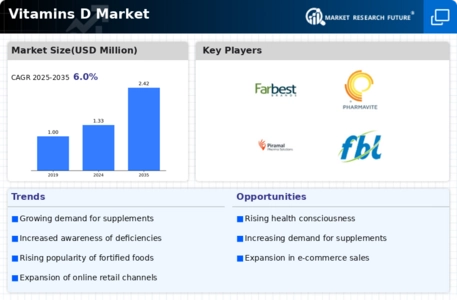
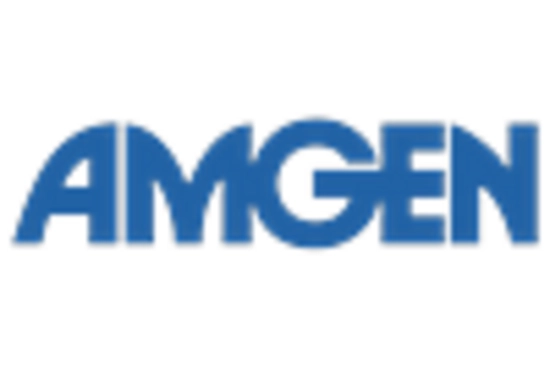

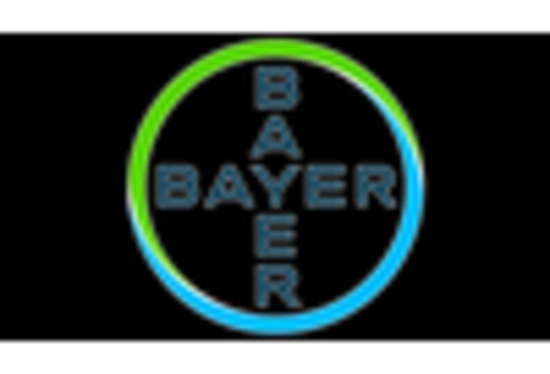
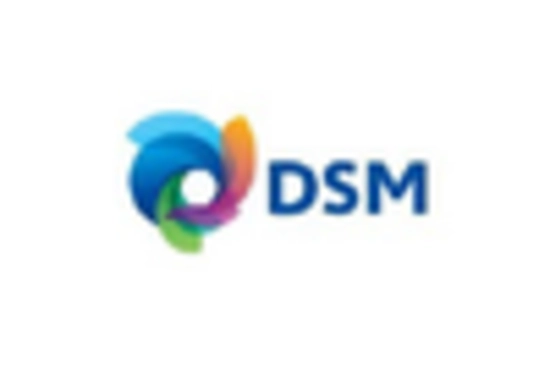
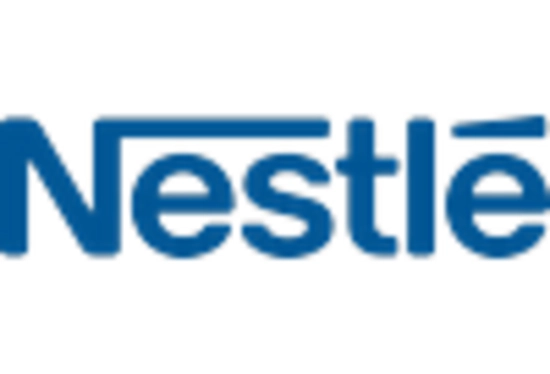
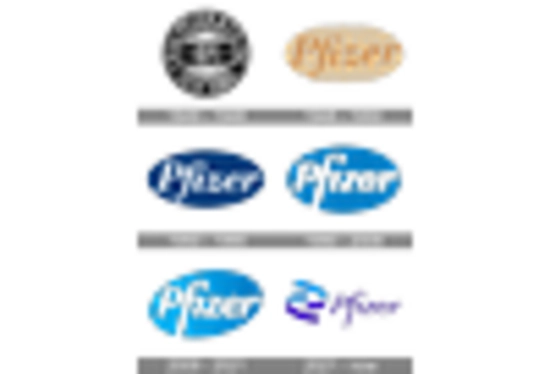

Leave a Comment